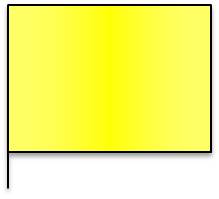
Yellow flag is waved at the observation post previous of the scene when the car stops on the course or stucks on the gravel. The display of the yellow flag is performed by waving.
When yellow flag is waved, the green flag is waved at the following observation post, and the section from yellow flag to green flag is yellow flag zone, and it is prohibited overtaking the other cars.
It is well known that overtaking in the yellow flag zone is prohibited. The yellow flag is an important flag when watching motorsports. It explains how the yellow flag is actually waved.
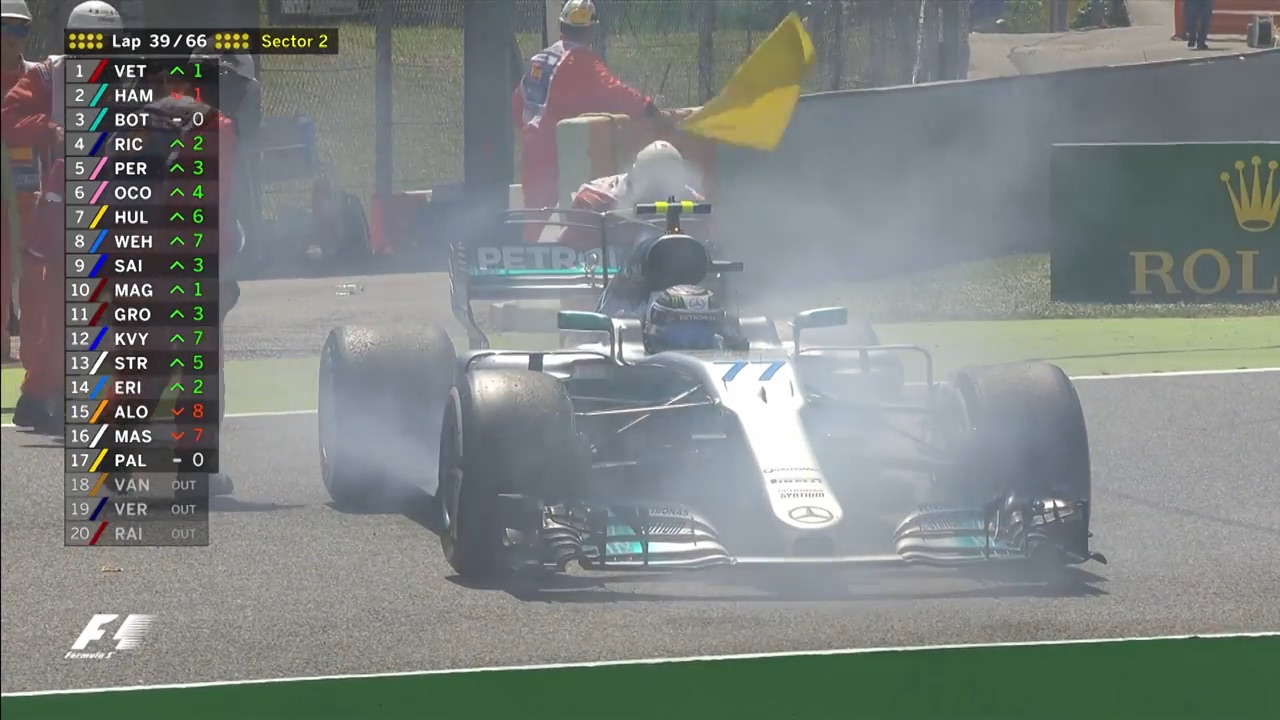
出典:youtube.com
Regulations
Single waved
Yellow flag is waved when there is a danger on the course. Actually, single yellow flag is waved in the following cases.
- Car is off the course.
- Car stucks on the gravel.
- Troubled car is running at a very slow speed, which is dangerous to the other car.
- Course marshals are removing the stopped car.
- There is a large falling object on the course
If there is a danger on the side or part of the course, single yellow flag is waved.
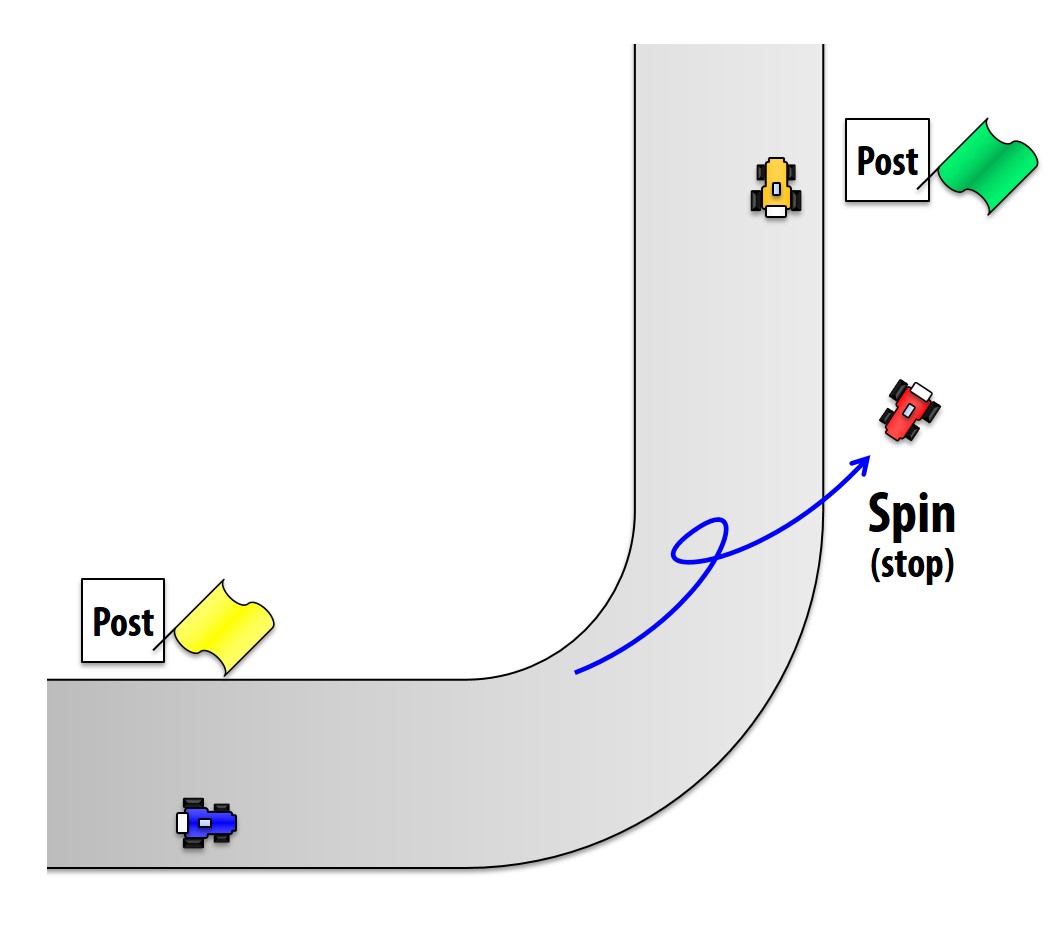
Double waved
Double yellow flags are waved in case the car is stopped or partially blocked on the course. Drivers must slow down significantly and be prepared to stop immediately.
The situations which double yellow flags are waved may be as follows.
- Cars stop on the course or the side of the course, affecting running of the other cars.
- Course marshals are engaged in removing stopped car on the side of the course.
In case the course is blocked or in danger, double yellow flags are waved.
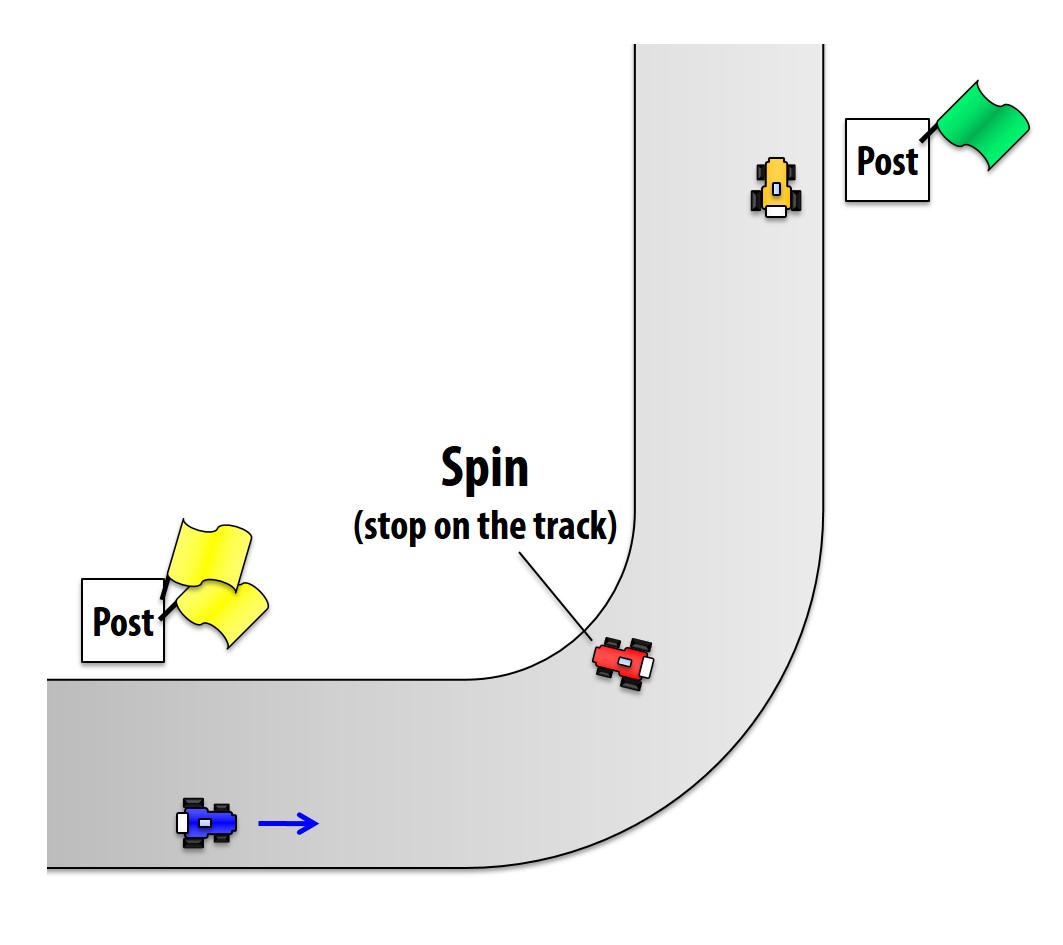
Course marshals are engaged in removing stopped car on the side of the course.
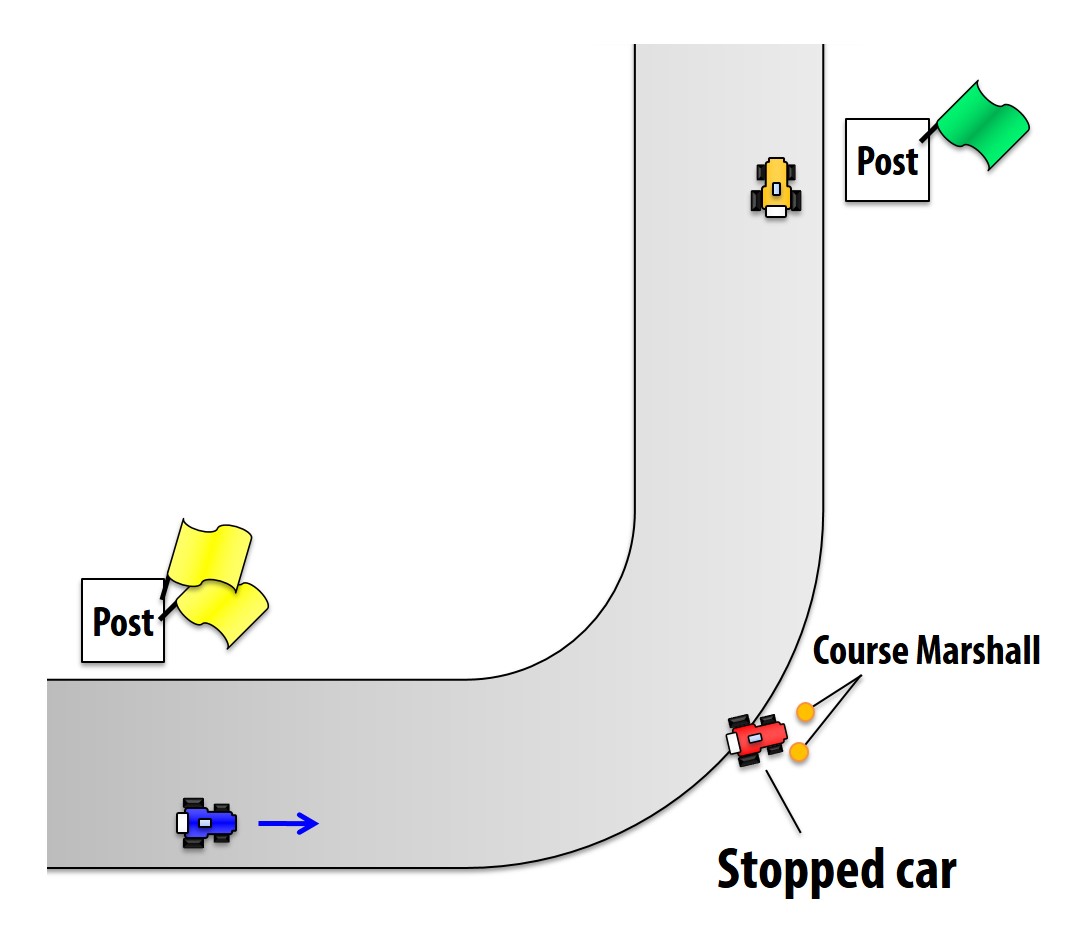
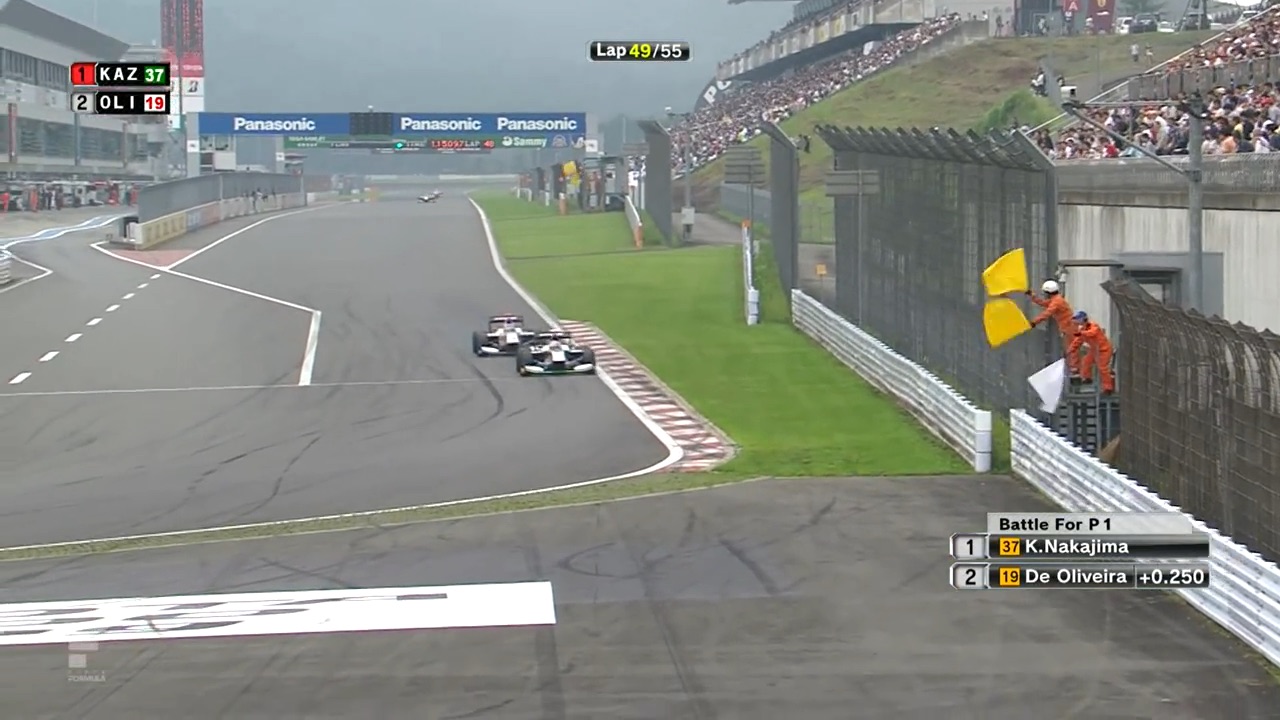
出典:youtube.com
In case yellow flag is waved
When yellow flag is waved at the previous observation post of the accident site, green flag is waved at the following observation post of accident site. The section from yellow flag to green flag is defined as the yellow flag zone, and overtaking is prohibited in the yellow flag zone.
Overtaking in yellow flag zone
Overtaking is prohibited in the yellow flag zone.
In multiple classes run at the same time as endurance race, the speed difference between the classes is large. However, no matter how fast the car is, it is prohibited overtaking other slower car in the yellow flag zone. It is also prohibited overtaking a lap down car.
The section from yellow flag to green flag is defined as the yellow flag zone, and overtaking is prohibited.
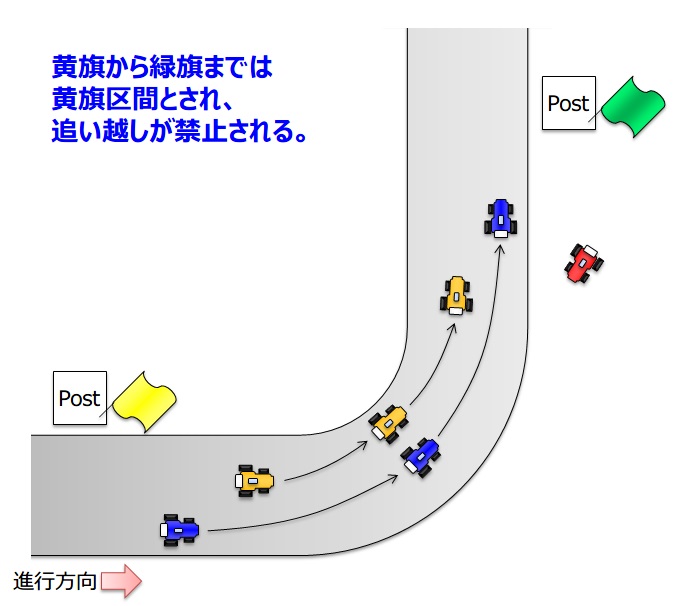
Judgement for overtaking in the yellow flag zone
When an overtaking occurs in the yellow flag zone, race control judges whether the driver who overtakes the other driver in yellow flag zone has confirmed yellow flag.
The driver of the car that passed in front of the observation post at the moment yellow flag was waved was determined to have difficulty confirming yellow flag, and it may not be imposed the penalty.
In 2016 SUPER GT Round 6 Suzuka Circuit, it was deliberated that No.38 ZENT CERUMO RC F had overtaken No.36 au TOM’S RC F in the yellow flag zone. In the international broadcasting video, it was confirmed that No.38 passed in front of the observation post waving yellow flag before overtaking, but race control judged yellow flag just before passing the observation post It was determined that it was difficult for the driver to confirm yellow flag and it was not a violation.
The background of the judgement was explained by Mr. Naoki Hattori, DSO (Driving Standard Observer) of SUPER GT, in the TV program “SUPER GT PLUS”.
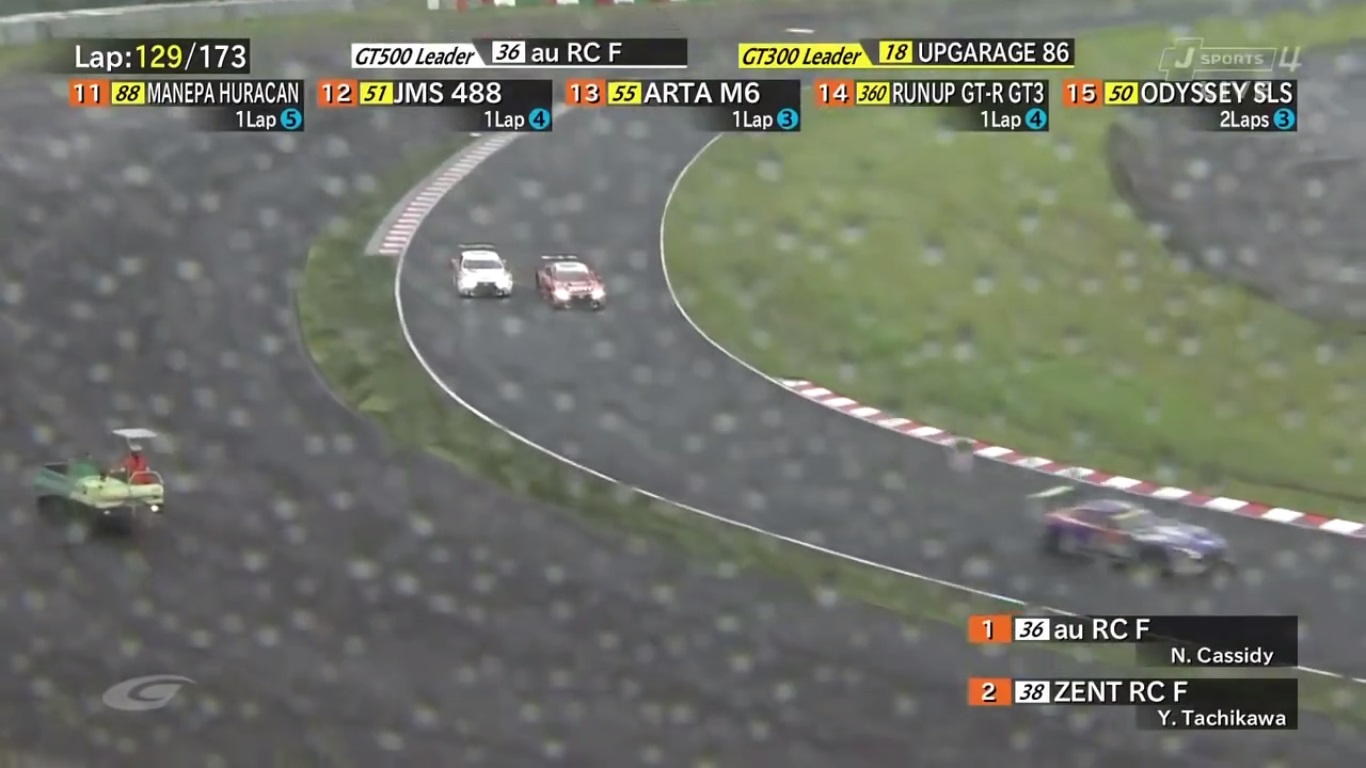
出典:youtube.com
In case it is judged that race control is unavoidable even in the yellow flag zone, the driver who overtake other driver in yellow flag zone may not be penalized.
- Overtook an obvious troubled car at very low speed.
- Overtook a car that has left the racing line and is instructed to other car to go ahead.
- Overtook a car just after the pit out, which had entered the course at a low speed.
Violation of deceleration obligation in the yellow flag zone
In the yellow flag zone, the driver must drive at reduced speed. Therefore, spin, overrun, and contact in the yellow flag zone are also closely monitored.
Race control considers that spin and overrun should not occur if the drivers are driving at reduced speed. Also, if you step on the curb near the accident site, it is imposed penalty for violating deceleration obligation.
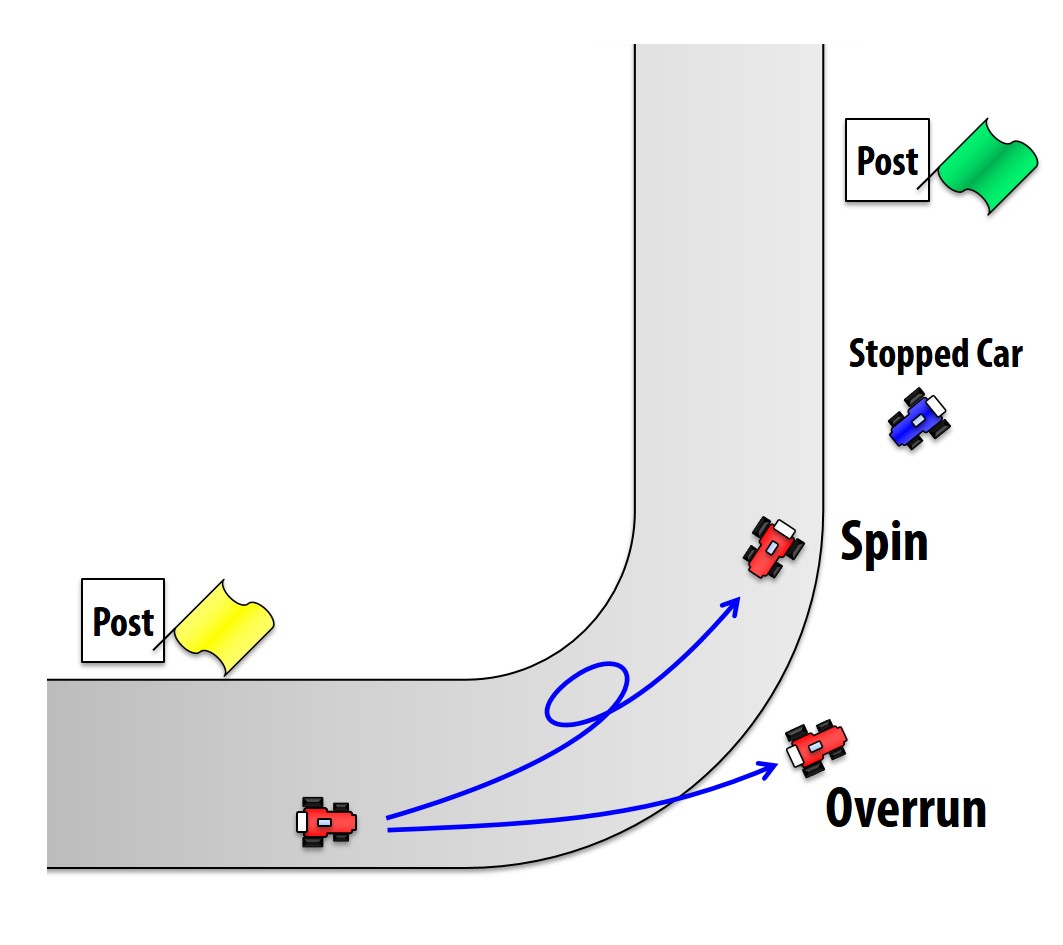
In qualifying session, in case it achieved the best time lap despite passing the yellow flag zone, it is verified that the deceleration was surely made in the yellow flag zone. If it is judged that the driver has not slowed down, a penalty such as deleting the best lap time or grid down may be imposed.
In 2017 SUPER GT Round 3 Autopolis, yellow flag was waved because No.36 au TOM’S LC500 was off the course and stucked on the gravel during qualifying session. After that, No.38 ZENT CERUMO LC500 and No.6 WAKO’S 4CR LC500 passed through this yellow flag zone, and recorded the best lap time. However, race control judged that the deceleration of these two cars in this yellow flag zone was insufficient after the qualifying session, and the lap time (best lap time) that passed the yellow flag zone was deleted.
In the Appendix H International Sporting Code issued by FIA on December 22, 2017, words were added to the description of single waved and double waved, and deceleration in the yellow flag zone was spelled out.
Removal of yellow flag
When the danger at the accident site has been removed, such as removal of the stopped car is finished, yellow flag on the previous observation post of the accident site is removed. At the same time, green flag of the following observation post of the accident site is also removed.
Even if the stopped car is not completely removed from the course, yellow flag may be removed when race control judges that it is safe, such as on a gravel away from the course or inside the corner etc. Operation varies by race series and circuit.
Display from multiple previous observation posts
Race director can order the waving of yellow flag from several previous observation posts of the accident site. It is operated to ensure that the car slows down in case there is a serious danger on the course.
However, this operation is required the decision of the race director. Therefore, it is not possible to wave yellow flag from the multiple previous observation posts by the decision of the course marshals.
Specifically, there are the following cases.
- Several cars are stopped on the course
- Observation post where yellow flag is waved is on ahead of blind corner
- It is necessary to urge the driver to decelerate early because of oil leaks.
- Because the the work of removing car is being performed, the speed of the car must be reduced sufficiently.
Display for falling objects
Normally, oil flag is displayed for fallen objects. However, in case the fallen object is very big and it could be dangerous to the cars, yellow flag is waved.
Removal of fallen objects by course marshal
In case a fallen object is on the racing line of course and affects the cars, the course marshal removes the fallen object. During the work, yellow flag is waved because the course marshal exists on the course and become a dangerous situation.
Operation during qualifying session of SUPER FORMULA
According to the regulations of the SUPER FORMULA, the lap time of cars passing through the yellow flag zone is not adopted. It applied to all cars that pass through the yellow flag zone.
Operation when the red flag is waved
Although it is a local rule operation, in case red flag is waved due to an accident, yellow flag may be waved at the previous observation post of the accident site in addition to the red flag to notify other cars of the accident site.
Formation lap
On the formation lap, green flag is waved at all observation posts, but it is common to wave yellow flag at the observation post just before the grid to encourage deceleration.
It is not specify the operation method by regulations. Operation method differs for each circuit.
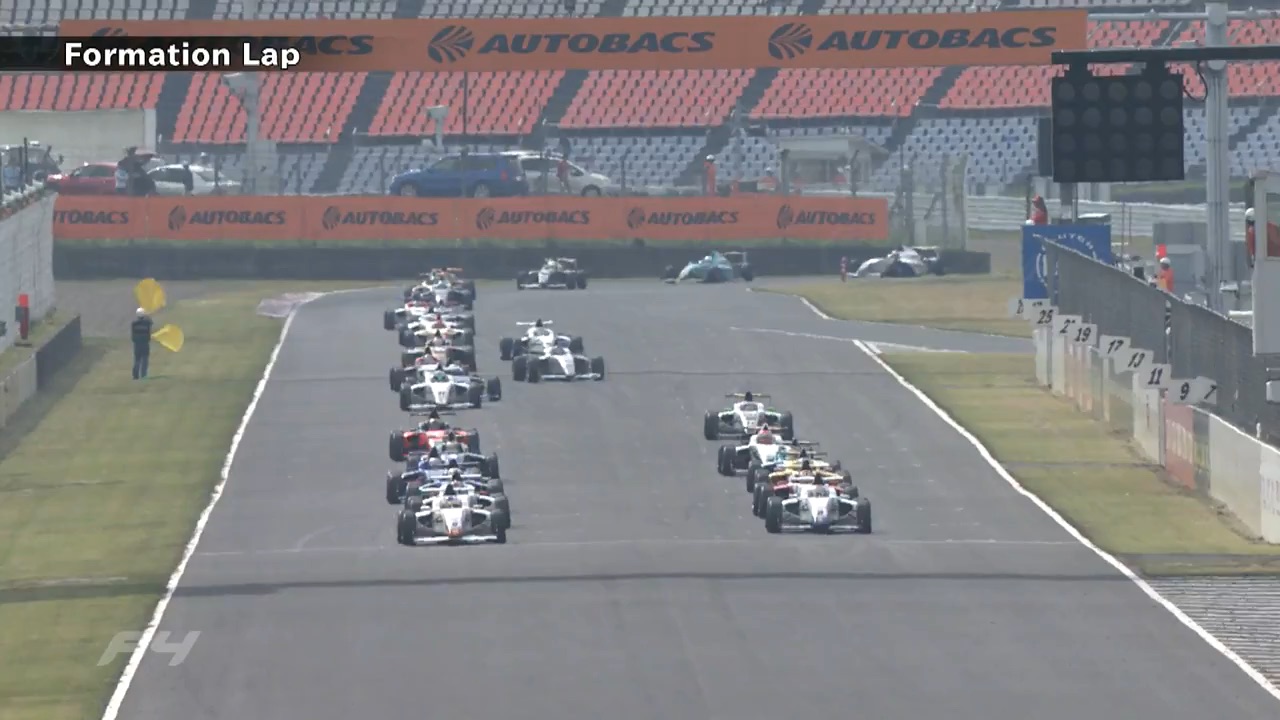
出典:youtube.com
Rolling lap
In a rolling start race, yellow flag is waved on all observation posts during the rolling lap. Once the race starts, yellow flag is removed.
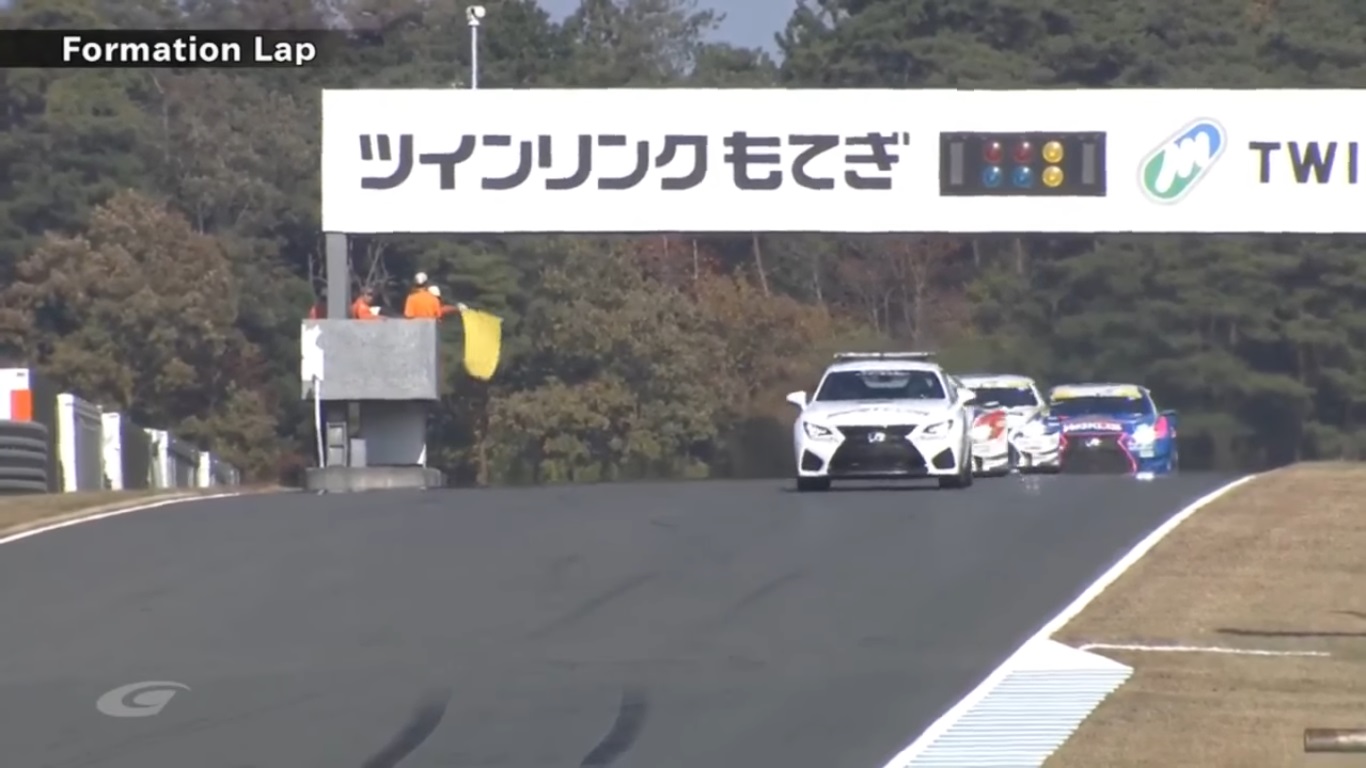
出典:youtube.com


















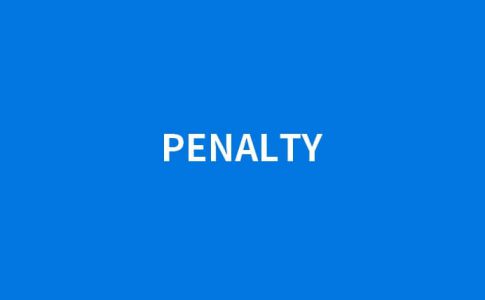




2.5.5.1 b) Yellow flag
This is a signal of danger and should be shown to drivers in two ways with the following meanings:
– Single waved: Reduce your speed, do not overtake, and be prepared to change direction. There is a hazard beside or partly on the track. It must be evident that a driver has reduced speed; this means a driver is expected to have braked earlier and/or noticeably reduced speed in that sector.
– Double waved: Reduce your speed significantly, do not overtake, and be prepared to change direction or stop. There is a hazard wholly or partly blocking the track and/or marshals working on or beside the track. During free practice and qualifying, it must be evident that a driver has not attempted to set a meaningful lap time; this means the driver should abandon the lap (this does not mean he has to pit as the track could well be clear the following lap).
Yellow flags should normally be shown only at the marshal post immediately preceding the hazard.
In some cases, however, the Clerk of the Course may order them to be shown at more than one marshal post preceding an incident.
Overtaking is not permitted between the first yellow flag and the green flag displayed after the incident.
Yellow flags should not be shown in the pit lane unless there is an incident of which the driver should be made aware.
The Clerk of the Course or Race Director may impose a speed limit on the full course or any section of the track when double yellow flags are displayed during practice, qualifying practice or races.
• When a single speed limit is imposed on the full course, this will be indicated with a single yellow flag and a board indicating FCY (meaning “Full Course Yellow”). If appropriate, double waved yellow flags will continue to be displayed at the post prior to the incident.
• At races where a variable speed limit may be imposed on the full course, this will be indicated with a single yellow flag and a board indicating VSC (meaning “Virtual Safety Car”.) If appropriate, double waved yellow flags will continue to be displayed at the post prior to the incident.
• In races where a speed limit may be imposed on a section of the track, the beginning and end of the sections will be clearly marked by the side of the track, with a double yellow flag and a board indicating SLOW (meaning “slow down”). They will be displayed at each marshal post in the section. A single waved yellow flag will be displayed at the post prior to that.
In every case, the end of the imposition of the speed limit will be indicated by a green flag at the next marshal post, or at each marshal post where appropriate. The sporting regulations for each race or championship may provide for the enforcement of these requirements.